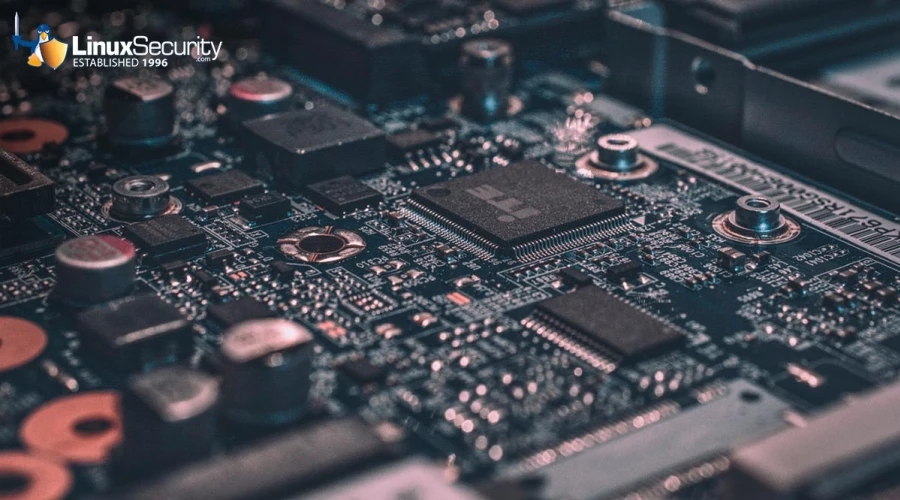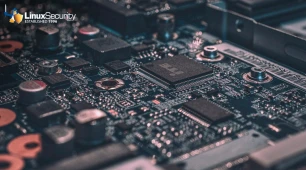
Linux 6.13 features significant enhancements in Intel Trust Domain Extensions (TDX) code that aim to provide robust hardware-based security protections for virtual machines (VMs) on recent Xeon processors. As virtualization becomes an indispensable part of modern IT infrastructures, such advancements, as seen in Linux 6.13, are becoming more crucial.
In this article, I'll explore the security impact of these changes and why they will not be exposed by default.
Overview of Intel Trust Domain Extensions (TDX)
Intel TDX provides virtual machines with hardware-level isolation. This helps ensure that even if an underlying hypervisor is compromised, the integrity and confidentiality of any VMs hosted remain secure. Trust Domain Extensions use secure enclaves to create a Trusted Execution Environment for these VMs - protecting against potential attack vectors that might exploit hypervisor vulnerabilities.
Critical Updates in Linux 6.13
 Source: Phoronix Linux 6.13 features key improvements in managing Intel TDX functions more effectively. Updates primarily target improving interactions between TDX guests and virtual machine monitors by implementing new infrastructure for handling metadata. This change provides developers with more granular control.
Source: Phoronix Linux 6.13 features key improvements in managing Intel TDX functions more effectively. Updates primarily target improving interactions between TDX guests and virtual machine monitors by implementing new infrastructure for handling metadata. This change provides developers with more granular control.
One of the key enhancements in this update is the capability of disabling runtime injection of #VE (Virtualization Exception) exceptions from virtual machines at runtime. Before now, control of #VE exception injections was handled via static switches. Any misconfiguration on the guest side could cause panic and downtime. However, runtime control features provide administrators more flexibility and finer control mechanisms to handle exceptions efficiently and ensure maximum stability and security for their systems.
Linux 6.13 also introduces an enhancement that enables TDX guests to opt in to access topology CPUID leaves. Previously, accessing such information would trigger a #VE, disrupting VM performance and operational insights for workload management. With these changes, Linux 6.13 marks a significant step in optimizing and managing TDX functionalities, ensuring greater control, stability, and performance for virtualized environments.
Examining the Security Implications of These Changes
Linux 6.13's advancements significantly enhance Intel TDX security measures. By providing runtime control for #VE exception handling, the new kernel version minimizes disruptions and potential attack surfaces caused by misconfiguration or malicious use. Increased access to topology CPUID data without setting off exceptions also helps protect against unintended downtime and improve resource management. Runtime control features enhance security by enabling dynamic adjustment of #VE exceptions, providing more responsive and adaptive security management. Furthermore, permitting guests to access CPUID topology data without triggering #VEs ensures operational resilience and efficient resource allocation, making virtualization environments secure and performant.
Constraints on Default Exposure
 Though their benefits are readily apparent, these enhancements will not appear by default. This is due to compatibility issues between Linux and other operating systems. Retaining "legacy behavior" for compatibility reasons recludes making these features default behaviors. The pull request explains: "For both cases, it would have been easiest to change the default behavior simply; however, certain 'other' OSes require keeping their legacy behavior.
Though their benefits are readily apparent, these enhancements will not appear by default. This is due to compatibility issues between Linux and other operating systems. Retaining "legacy behavior" for compatibility reasons recludes making these features default behaviors. The pull request explains: "For both cases, it would have been easiest to change the default behavior simply; however, certain 'other' OSes require keeping their legacy behavior.
This statement implies a reference to Microsoft Windows but more broadly illustrates the considerations kernel developers must account for when developing software. If new behaviors were enabled automatically, they could cause compatibility issues that cause virtual machines running legacy or non-compliant operating systems to crash. Keeping compatibility intact ensures broad stability and usability but will require manual opt-in for environments ready to utilize these new features.
Do you agree with these constraints? We'd love to hear your opinion! Connect with us @lnxsec, and let's have a discussion.
Our Final Thoughts on the Significance of These Security Improvements
Intel TDX advancements for Linux 6.13 represent an essential advance in secure virtualization. Improving exception management and data access protocols boosts the performance and security of systems employing Intel's latest Xeon processors. Compatibility requirements across various operating systems necessitate restrained default exposure to guarantee stability and broad applicability.
While Linux 6.13's developments can significantly enhance virtualization security and efficiency, administrators must carefully weigh these features against compatibility concerns for broader virtual machines (VMs) deployments. As virtualization evolves, such incremental yet essential advances demonstrate how far open-source communities have come toward providing secure computing paradigms.

















